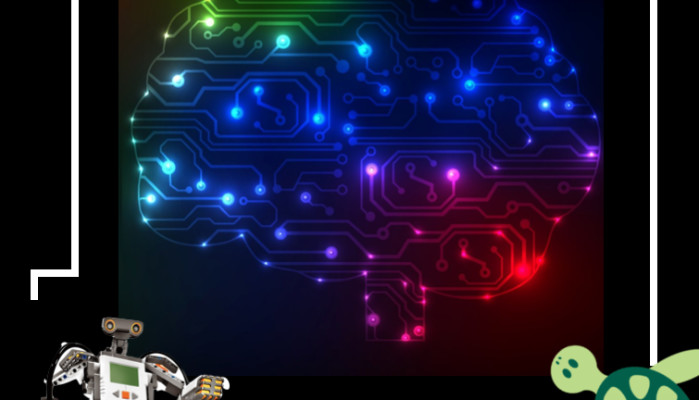(This article appeared first in August 2016)
For me, it was just last week that Seymour hovered over me.
Conversation with my father, as usual, turned intense and entered the troubled waters of epistemology and approaches to learning, and acquiring knowledge. I threw at him the hole in the wall experiment. He hugely appreciated the experiment and the secret of learning lost on most of the world which this experiment proved once again.
And then he one-upped me by asking if the children from the experiment did learn programming through such tinkering or barely, operating the computer through softwares? More importantly, could one learn programming at all through such tinkering?
I was stumped because impressed with the wowness of the experiments setting and outcomes, I had not bothered to find out these details. Touche!
The second question got me thinking even more, learning being my prime interest area. Categories of knowledge which can or cannot be learnt by oneself, and would definitely need structured learning, started forming in my head.
It was then that he pulled out another of his one-up card and said,
” Heard of LOGO?”
“Of course”
Of course, I have. From you only the first time, and more. (But of course i wont tell you now and give you more power in this war of words! ) Why didn’t I think of that? Yes, LOGO was how children could program and it broke multiple myths in one single stroke about children, learning and programming! Way back in 1967.
A swarm of ideas emerged in the conversation that followed, including and beyond the categories of knowledge and learning mechanisms. 50 years after later, Seymour was still being invoked through LOGO without the name of its creator ever being mentioned.
But that is Seymour. Like the ever present but invisible air. Or like the ancient Seers, Rishis, whose insights have become axiomatic and their names forgotten.
For those of you who are still trying to figure out, I am talking about Seymour Papert, who passed away two days back.
When I read the news, I searched for posts on linked-in. Along with the articulate and professional pieces on official sites and big publications, I was looking for the personal stories around this phenomenon, more than a person…how someone was touched or impacted by some ripple from him.
For a world going ballistic on digital and AI, I was actually surprised to find just three posts, only one of which was immediate.
I mean think about this. This mathematician interested in learning, conceives of a programming language which would help children learn, and in turn help understand learning itself. Way back in 1968, when the regular computer was the size of a room.
It goes on to become LOGO, all the way upto the modern machine learning and Artificial Intelligence. On the sides, the Mindstorm robotics from LEGO, sharing the name of his book. And the laptop! And a lot of things in the domain of Digital today.
That’s Seymour. Even his colleagues, each one a luminary in his own right, speak without awe about him. But they speak of him time and again, and of his presence in their works, in a matter of fact way. After all, as I said before, how much can you acknowledge the air in the room!
In the year 1997 I entered the swank showroom called Tangerine on the corner of Churchgate Station, Mumbai. All of 22, and a student of MBA, I was there to enquire how I could finance a laptop through bank loans. Just to jog your memory, the internet has not yet arrived and windows has just about ! A smallish crowd of sales folks of different levels gathered around me as their Boss, good natured, well meaning and totally aghast, tried to convince me to go for a nice desktop instead, for one fifth the cost. And I on my part, tried in vain to tell him how I wanted the freedom and flexibility to play with audio recording, text capture and picture manipulation at my whim and fancy, in ways that were not possible with a desktop!! Twenty years before Evernote…when even desktops were accessible only in college labs.
Of course, the student could not manage to get the loan of 2 Lakhs for the laptop that time.
Much later though, he could look back and see Seymour’s presence in three ways. The obvious laptop, the bias for playfulness in learning that his argument resonated with, and finally, the first tremors of the digital revolution. One more actually, the most critical one: having an idea, a concept from the future which is difficult to communicate, more difficult to understand and even more difficult to be a part of, too soon.
Whenever I read of Seymour’s journey, similar moments are visible dime a dozen. Mine is only a nano version, a distant cousin with a common DNA strand in spirit.
I think I get it. His legacy is so overwhelming, that everyone is scared to start speaking or writing about him, for they might leave some critical piece and would do injustice to his legacy.
For me he is at heart a learning enthusiast more than anything else. Piaget is said to have said, “no one understands my ideas as well as Papert”. And that is HUGE! Because everything in development domain traces its roots to Piaget.
To all the champions of AI, Digital and Learning, I leave you with an invitation to share personal stories, or leave the links to where you share.
Let us celebrate his legacy through recalling personal encounters with anything that has a seymour chromosome, as you savour these starkly different pieces on the seer of the digital, Seymour Papert

